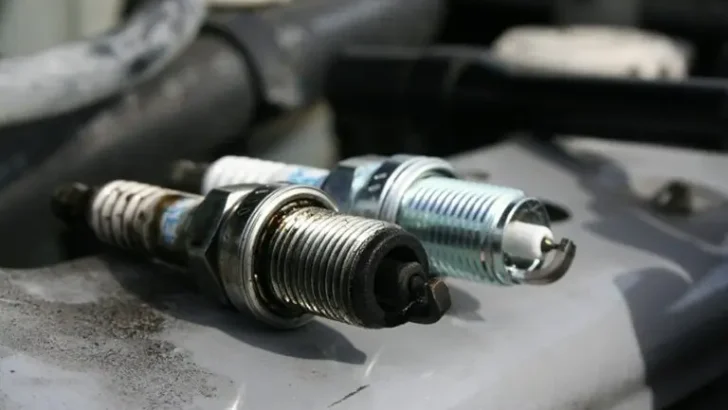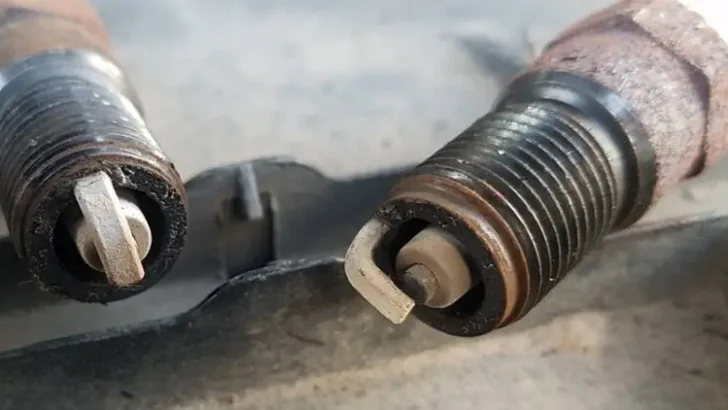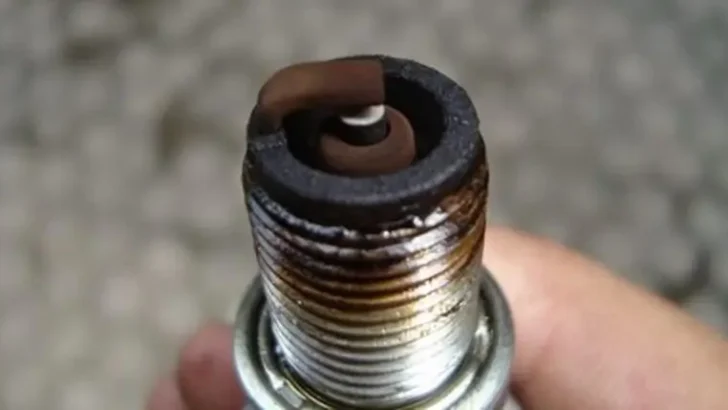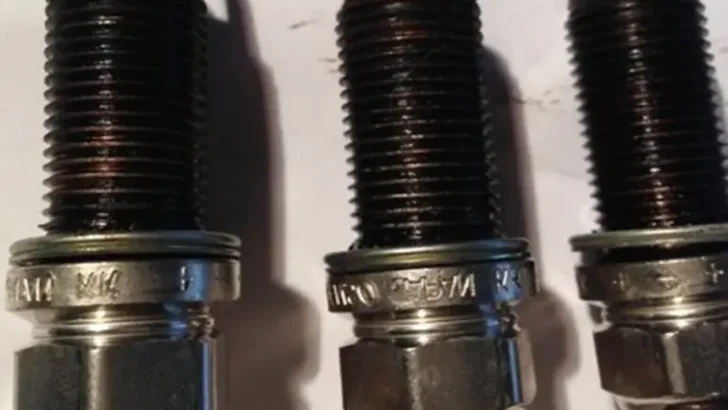Spark plugs can blow out and cause a lot of problems such as lack of acceleration, bad gas mileage, rough idle, and weird noises. But many people ask ”can you drive with a blown spark plug?”
Is it safe to get your vehicle to the repair shop or should you call a tow truck once you have a blown spark plug? I talked to several mechanics in my town and here is what I found out.
Key Takeaway
- Driving with a blown spark plug is not recommended as it can cause severe damage to the engine.
- Signs of bad spark plugs include rough idle, difficulty starting the engine, engine misfires, surging, reduced fuel efficiency, lack of acceleration, and rough idling.
- Several factors can cause spark plugs to go bad, including normal wear and tear, carbon buildup, oil or fuel contamination, improper gap settings, overheating, and engine problems.
Can You Drive With a Blown Spark Plug?

Driving with a blown spark plug is not recommended as it can cause extreme damage to the engine, including misfires, reduced gas mileage, rough idling, lack of acceleration, and potential fuel leakage.
Each cylinder has a spark plug that ignites the air and fuel mixture into the combustion chamber. A car with 8 cylinders (V8 engine) will have 8 spark plugs, one for each cylinder. What happens when a spark plug is blown, no sparks would be created to ignite the air and fuel mixture in that particular cylinder.
Basically, your engine now has to overwork the remaining 7 cylinders in order to compensate for the lost cylinder. When a spark plug is blown and your engine loses a cylinder, you will experience a lack of power, poor engine performance, bad gas mileage, rough idle, different engine noises, and the smell of gasoline from the exhaust.
Now, the question is, can you drive a car with a blown spark plug? If you carefully read my article so far, you will know that you shouldn’t drive a car with a bad spark plug. The safest thing that you can do is disconnect the spark plug wires and thus disconnect that electrical current to the spark plugs and drive your vehicle to the mechanic shop.
When a spark plug is blown, it can be hard for you to remove it at home. This is because when a spark plug blows, extra heat is generated and the spark plug can get welded. There is a great chance that you will destroy the spark plug wiring while trying to take out the blown spark plug.
How Long Can You Drive With a Bad Spark Plug?
You can still drive for about 50 – 100 miles if only one spark plug is bad. If there are multiple faulty spark plugs, you shouldn’t drive at all.
The mileage you can drive with a bad spark plug can vary depending on the specific condition of the plug and the engine.
It’s important to note that continuing to drive with faulty spark plugs can lead to poor performance, decreased fuel efficiency, and potential engine damage.
How To Fix Oily Spark Plugs

If you are changing the spark plugs on your engine, only to discover that your spark plugs are covered with oil, don’t freak out, it doesn’t mean that your engine is going to blow up. It just means that your spark plug tubes are leaking. You can fix that problem by yourself.
- Take out the spark plug wires and put them aside.
- Remove the clamps off the hoses that go to the valve cover and pull them off.
- Put aside or remove any wiring harness that is in the way of removing the valve cover.
- Remove the valve cover. The spark plug tubes are built into the valve cover. So, you have to remove the valve cover to change them.
- If the valve cover is stuck, get a screwdriver and pry under.
- Locate the leaking seals and take out the old spark tube gaskets.
- Put a sealer on the new spark tube gaskets and place them on top of the spark plug tubes.
- Put the bolts back on and tighten them up.
- Reinstall the hoses and the spark plug wires back in.
- If you spill any oil on the engine, clean it with a brake cleaner so the car won’t smoke when you turn it on.
Signs of Bad Spark Plugs

- Rough idle: If your engine is idling roughly or inconsistently, it could be a sign of worn-out spark plugs.
- Decreased acceleration: Bad spark plugs can result in a loss of power and slower acceleration.
- Misfires: An engine misfire, characterized by a sudden jerking or hesitation, can indicate faulty spark plugs.
- Poor fuel economy: If you notice a decrease in gas mileage, it could be due to worn spark plugs not efficiently igniting the fuel.
- Difficulty starting: A damaged spark plug can make it harder for the engine to start, causing prolonged cranking or even failure to start.
- Engine surges: When the engine revs up and down unexpectedly, it may be a symptom of faulty spark plugs.
- Increased emissions: Failing spark plugs can lead to higher emission levels, potentially triggering the check engine light.
- Noticeable vibrations: If you feel excessive vibrations while driving, it could be due to worn spark plugs affecting engine performance .
What Causes Spark Plugs To Go Bad

- Normal wear and tear: Over time, spark plugs naturally degrade due to constant exposure to high temperatures and electrical stress.
- Carbon buildup: Combustion byproducts can accumulate on the spark plug electrodes, reducing their effectiveness and eventually causing them to fail.
- Overheating: Excessive heat caused by factors such as advanced ignition timing, a lean fuel mixture, or insufficient cooling can lead to spark plug failure.
- Oil contamination: If there is a leak in the engine’s valve cover gasket or piston rings, oil can seep into the combustion chamber and foul the spark plugs.
- Incorrect gap: If the spark plug gap is not set correctly, it can result in issues with the ignition process and lead to premature spark plug failure.
- Fuel additives or contaminants: Low-quality fuel or the use of certain fuel additives can leave deposits on the spark plugs, affecting their performance.
- Improper installation: Incorrect installation of spark plugs, such as incorrect torque or threading, can cause damage and early failure.
- Excessive idling: Extended periods of idling can lead to carbon fouling and decreased spark plug lifespan.
- Manufacturer defects: In rare cases, manufacturing defects can cause spark plugs to have reduced longevity or fail prematurely.
How Long Do Spark Plugs Last?
On average, classic spark plugs last around 30,000 miles, while platinum and iridium spark plugs can last up to 55,000 miles.
It’s best to consult your car’s owner’s manual or follow the manufacturer’s guidelines for the specific recommended replacement interval.
Regular maintenance and inspection can help determine when spark plugs need to be replaced based on their condition rather than a specific mileage threshold.
FAQs
Q: What is a spark plug?
A: A spark plug is an essential component of the ignition system in a vehicle. It provides the electrical spark that ignites the fuel-air mixture inside the cylinders.
Q: How much does it cost to fix a blown spark plug?
A: The cost to fix a blown spark plug can vary depending on several factors, including the make and model of your vehicle and the complexity of the repair. It is best to consult a mechanic for an accurate estimate.
Q: What are the symptoms of a bad spark plug?
A: Some common symptoms of a bad spark plug include engine misfires, rough idling, poor fuel efficiency, difficulty starting the engine, and a decrease in overall engine performance.
Q: Can a faulty spark plug cause other issues?
A: Yes, a faulty spark plug can cause a variety of issues, including engine misfires, loss of power, and poor fuel efficiency. It can also lead to damage to other engine components if left unaddressed.
Q: How long can you drive with a blown spark plug?
A: It is not recommended to drive with a blown spark plug as it can cause further damage to the engine. It is best to have it repaired as soon as possible.
Q: Can you still drive your car if one spark plug is damaged?
A: It is not recommended to drive your car with a damaged spark plug. This can cause engine misfires and potentially lead to further damage to the engine if not addressed.
Q: Can a spark plug cause a misfire?
A: Yes, a faulty spark plug can cause engine misfires. If the spark plug is not providing a strong enough spark, it can result in incomplete combustion and lead to a misfire.
Q: When should I replace the spark plug?
A: It is generally recommended to replace spark plugs every 30,000 to 50,000 miles, or as specified by the manufacturer. However, if you are experiencing any symptoms of a bad spark plug, it is best to have it replaced sooner.
Q: Is it safe to drive with bad spark plugs?
A: It is not safe to drive with bad spark plugs. They can cause various issues such as engine misfires, loss of power, and poor fuel efficiency. It is best to have them replaced as soon as possible.
In Conclusion
Driving with a blown spark plug is never a good idea, as it can lead to costly engine repairs and may even result in an accident.
Therefore, it’s important to be aware of the potential signs of a faulty spark plug—which includes reduced power, poor acceleration, rough idle, and higher fuel consumption—so that you can address any issues with your vehicle in a timely manner.
